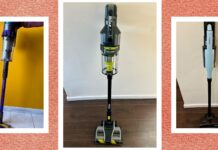So far, development of the electric vertical-lift aircraft that will enable our dreams of future urban air taxis has largely been the purview of small aviation startups. The “bigs,” Boeing and Airbus, have acquired or partnered with smaller firms, while automakers – who bring expertise in mass-production if not flying – have mainly stayed on the sidelines. That changed in a big way this week at CES.
First, helicopter manufacturer Bell confirmed that the Nexus air taxi concept vehicle it revealed last year wasn’t merely vaporware. On Monday at CES, the company unveiled mockups of a smaller, nimbler fully electric model, the Nexus 4EX, based on the lessons learned from the response to the earlier model. Bell further staked its claim in future aeromobility, announcing a proposed smart city ecosystem that would help distribute the services of air taxis and drones and manage their operation, whereabouts, and maintenance.
Meanwhile, South Korean carmaker Hyundai—an industrial giant well-versed in the kinds of high-volume manufacturing a viable air taxi industry will require—also revealed designs for both a craft and a support system for future air taxi operations. Its four-passenger S-A1 aircraft, developed in collaboration with Uber Elevate, uses eight rotors: four that tilt for vertical and horizontal flight and four that are fixed in the horizontal position to boost downward airflow while hovering. The company says its electric PAV (personal air vehicle) concept will work with a new ground-based infrastructure system that will include an air taxi station called a Hub and a network of electric PBVs—Purpose Built Vehicles—that will shuttle people to and from the air taxis.
Hyundai’s partnership with Uber, announced formally at CES, will facilitate the carmaker’s transition to aircraft manufacturing, says Nikhil Goel, Uber’s head of product in its aviation efforts. He cites Uber’s NASA-inspired approach that validates vehicle design concepts then releases them publicly so they can be adapted by other manufacturers. The craft has features, including counter-rotating blades that minimize noise and tilting rotors that improve efficiency, that match Uber’s envisioned approach to air taxis. “Their new conceptual design fits our requirements because it’s based on how we envision an ideal design,” Goel says.
Hyundai’s recent hire of former NASA aerospace engineer Jaiwon Shin is a sign of its commitment, Goel says, and the company’s expertise in global manufacturing will be key to the eventual rollout of large numbers of aircraft. “The future of Uber Air depends on having hundreds of thousands of aircraft around the world, and the aerospace industry isn’t used to that kind of volume,” Goel adds. “Electric aircraft manufacturing needs to be fundamentally different from how aircraft are manufactured today. That’s what will get us to an accessible cost-per-trip for air taxi flights.”
Bell brings its own manufacturing prowess to the table, though specifically in aviation. The company is also partnered with Uber, but it notably is positioning itself to provide its own infrastructure and aircraft management ecosystem. Citing estimates that 70 percent of the population will be living in urban areas by 2050 and noting that congestion already bogs cities down, the company is putting forward potential solutions: Mobility as a Service (MaaS), which would focus on making air mobility more broadly accessible, and Bell AerOS, a fleet management system using artificial intelligence to track and assess aircraft health and deploy aircraft as needed.
The services, spotlighted in Bell’s “Nexus City” demonstration area at CES, aim to fold in drone integration, including its Autonomous Pod Transport system. The system will also include app-based booking that will allow members of the public to summon rides. The whole system has been developed with Microsoft, and Bell suggests that rather than compete with Uber, it complements it by addressing customers who need service different from what Uber would provide—namely, commercial and industrial users as well as those also transporting items via drone.








